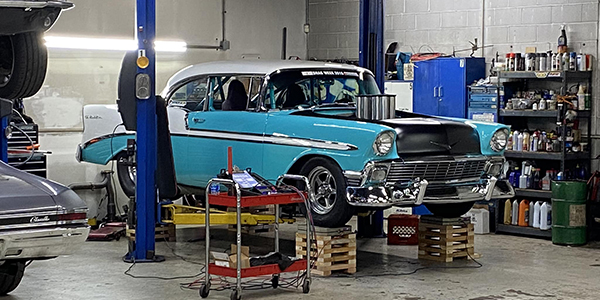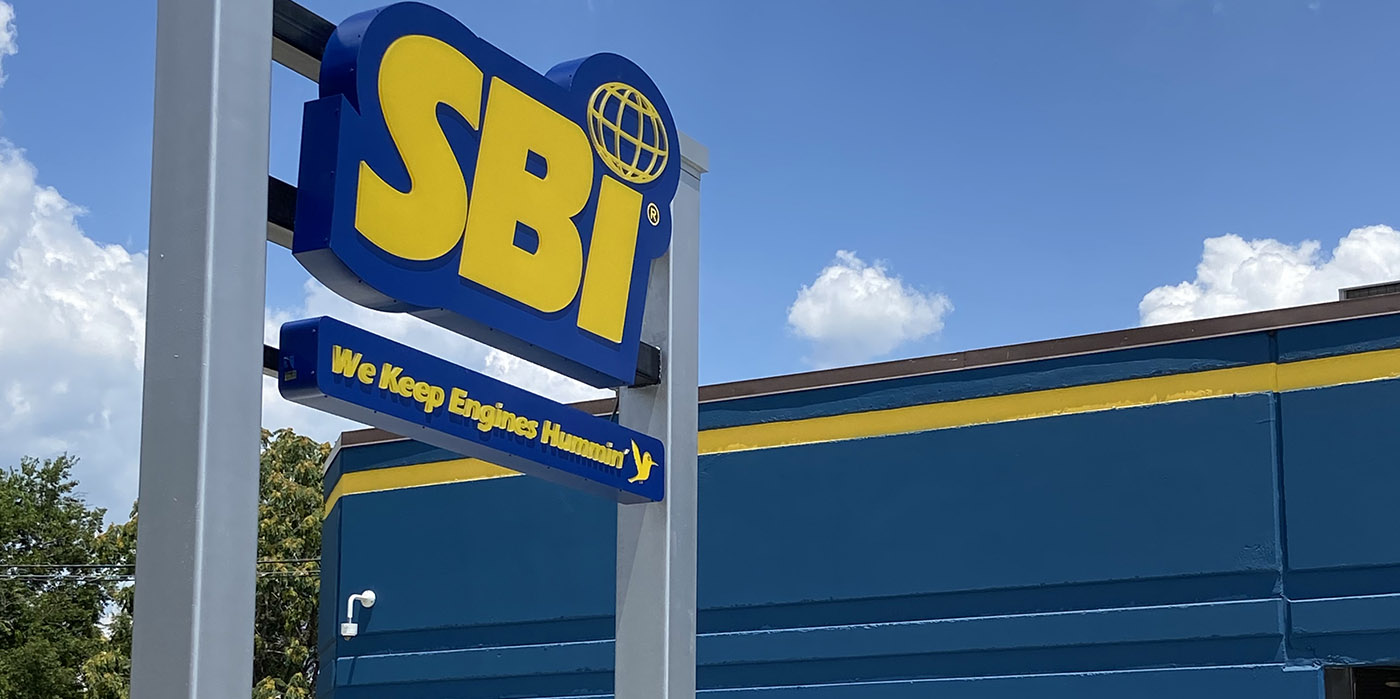Shop Line, Automotive Rebuilder, July 1996
Q
A In the
Production Engine Remanufacturers Association’s (PERA) May 1996
edition of Current Concerns, Ed Keibler of Sunnen Products Co.,
St. Louis, MO, says that the typical Ra finish on cast iron should
be 60 to 110 Ra. On aluminum cylinder heads it is much smoother
– typically 30 Ra or less. many OEM heads are actually smoother
than 30 Ra.
A smoother finish is required on aluminum
due to the thermal expansion characteristics of aluminum. Aluminum
typically expands at 1.6 times the rate of cast iron. If the gasket
happens to stick to the aluminum head during thermal cycling,
gasket damage will likely result.
Q Is there any way to identify Ford 1.1L
and 1.6L OHV blocks with oversize camshaft bearing housing bores?
A According
to a May 1996 technical bulletin from the Automotive Engine Rebuilders
Association (AERA), no. AERA notes that some blocks were manufactured
with .020″ (508 mm) oversize camshaft bearing bores. But
Ford does not identify these blocks with any external markings.
These blocks were used in automotive applications
during the early 1980s and are currently used for industrial applications.
To save yourself time and money, identify these blocks during
cleaning and disassembly. Camshaft bearings for these blocks are
special order items and are only available from Ford. See Chart
1.
Q What’s the fix for oil leaking into distributor
caps on Peugeot 405 XU9J2 engines fitted with 5900.G8 distributors?
A The distributor
you mention is the “short body” version. Since 1994,
Peugeot has provided a revised distributor shaft seal made of
Viton (p/n 59.00). See Figure 1. To replace the seal remove the
distributor cap, rotor and dust shield. Remove the two distributor
mounting bolts and the distributor assembly from the engine.
On the bench, use a scribe or paint to mark
the position of the drive (2) to the distributor shaft (9) in
order to ensure that it is installed in the same position during
reassembly.
Using a small awl or “dentist pick”
remove spring (1) by winding it off the drive (2). Securely support
the distributor drive in a set of V-blocks or in a vise with a
pair of soft jaws, leaving sufficient clearance under the drive
for removal of the roll pin (3). NOTE: Do not support the drive
by the two tabs, as indicated in Figure 1.
Using a hammer and drift pin punch, drive
out the roll pin (3); it may take several sharp blows to dislodge
the pin. Remove the distributor drive (2) and thrust washer (4).
NOTE: It is important to use a file to deburr the hole (8) in
the distributor shaft (9). Failure to do this may result in scoring
of the bushing when the shaft is removed from the housing (5).
Remove the distributor shaft (9) and thrust
washer (7). Using a small screwdriver or pick, pry out the oil
seal (6). Lightly lubricate the new seal and install it in the
same position as the old seal, with the open end (spring visible)
facing into the distributor housing (engine block side).
Reassemble distributor in reverse order of
disassembly. NOTE: Be sure to properly orientate the drive (2)
to the distributor shaft (9). Use Figure 2 as a guide if you forgot
to mark its position. Be sure to clean all oil residue from the
inside of the distributor, cap and rotor.
Q Can you provide general information on
diagnosing bearing-related problems on 1991-’94 Nissan trucks
equipped with KA24E engines?
A In general,
excessive clearance between main or connecting rod bearings and
the crankshaft journals will cause knocking as the crank rotates.
The knock is more noticeable at 2,000 rpm than at idle, and is
loudest in the oil pan area. Listen for bearing noises with a
contact-type stethoscope. Bearing noise will increase slightly
when the engine warms up or when the ignition timing is advanced.
It is often difficult to distinguish between
rod and main bearing noise. If removing spark plug wires isolates
the noise to a particular cylinder or non-adjacent cylinders,
then the knock is more likely to be rod bearings than main bearings.
When repairing bearing noise complaints use
a torque wrench to loosen the bearing caps. Compare the force
necessary to loosen the caps with the tightening specifications.
If the bolts are loose, check for contamination on the retaining
bolt threads or cap parting surfaces. Also check the crankshaft
for scoring and make sure the crankshaft and oil gallery blind
plugs are tight.
Specific to the Nissan KA24E engine, after
checking breakaway or tightening torque, inspect the bearings.
If the bearings are worn in an unusual manner, check that the
proper grade bearing was installed. Also check the bearing clearances.
If the clearances are correct, and the bearings are scored it
is likely that the bearings are receiving an insufficient supply
of oil. If any main or rod bearings are seized, replace the bearings
and/or crankshaft. Inspect the crankshaft oil gallery plugs. Then
thoroughly clean the engine and crankshaft oil galleries. Also
clean the oil pan and pump.
If the engine has a knock when engaging the
clutch, inspect the thrust surfaces of the number 3 main bearing.
Also check the crankshaft end play. If the thrust surfaces are
worn in an unusual manner and the main cap was torqued correctly,
check the align bore of the block and straightness of the crankshaft.
Another source of noise can be excessive side clearance on the
connecting rods.
Q I understand that Hyundai made changes
to the rocker arms on its 1994 Scoupe equipped with Alpha design
engines. Do you have the details?
A Both 1994
and 1995 Scoupes equipped with Alpha design engines featured rocker
arms that were changed from contact type to roller type to reduce
friction between the camshaft and rocker arms. See Figures 3 and
4.
With the addition of the auto lash adjusters,
the valve clearance has been changed from a manual adjustment
type to an automatic adjusting type. See Figure 5. The roller
rocker arm and auto lash adjuster reduce friction between the
contacting parts. NOTE: When the engine is first started, a tapping
noise may be heard. The noise is caused air flowing into the auto
lash adjuster through the oil passage and should disappear after
a few minutes. When checking or replacing the auto lash adjuster
use bleeding and leak down tests specified by Hyundai.


